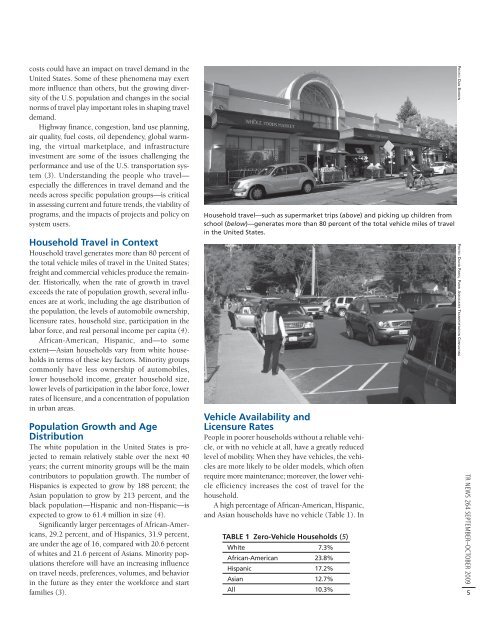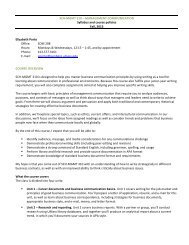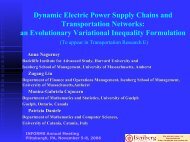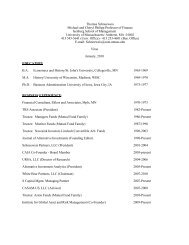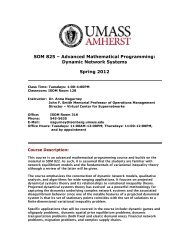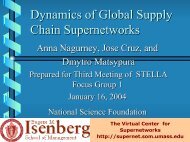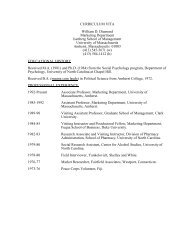TR News - Transportation Research Board
TR News - Transportation Research Board
TR News - Transportation Research Board
- No tags were found...
You also want an ePaper? Increase the reach of your titles
YUMPU automatically turns print PDFs into web optimized ePapers that Google loves.
costs could have an impact on travel demand in theUnited States. Some of these phenomena may exertmore influence than others, but the growing diversityof the U.S. population and changes in the socialnorms of travel play important roles in shaping traveldemand.Highway finance, congestion, land use planning,air quality, fuel costs, oil dependency, global warming,the virtual marketplace, and infrastructureinvestment are some of the issues challenging theperformance and use of the U.S. transportation system(3). Understanding the people who travel—especially the differences in travel demand and theneeds across specific population groups—is criticalin assessing current and future trends, the viability ofprograms, and the impacts of projects and policy onsystem users.Household Travel in ContextHousehold travel generates more than 80 percent ofthe total vehicle miles of travel in the United States;freight and commercial vehicles produce the remainder.Historically, when the rate of growth in travelexceeds the rate of population growth, several influencesare at work, including the age distribution ofthe population, the levels of automobile ownership,licensure rates, household size, participation in thelabor force, and real personal income per capita (4).African-American, Hispanic, and—to someextent—Asian households vary from white householdsin terms of these key factors. Minority groupscommonly have less ownership of automobiles,lower household income, greater household size,lower levels of participation in the labor force, lowerrates of licensure, and a concentration of populationin urban areas.Population Growth and AgeDistributionThe white population in the United States is projectedto remain relatively stable over the next 40years; the current minority groups will be the maincontributors to population growth. The number ofHispanics is expected to grow by 188 percent; theAsian population to grow by 213 percent, and theblack population—Hispanic and non-Hispanic—isexpected to grow to 61.4 million in size (4).Significantly larger percentages of African-Americans,29.2 percent, and of Hispanics, 31.9 percent,are under the age of 16, compared with 20.6 percentof whites and 21.6 percent of Asians. Minority populationstherefore will have an increasing influenceon travel needs, preferences, volumes, and behaviorin the future as they enter the workforce and startfamilies (3).Household travel—such as supermarket trips (above) and picking up children fromschool (below)—generates more than 80 percent of the total vehicle miles of travelin the United States.Vehicle Availability andLicensure RatesPeople in poorer households without a reliable vehicle,or with no vehicle at all, have a greatly reducedlevel of mobility. When they have vehicles, the vehiclesare more likely to be older models, which oftenrequire more maintenance; moreover, the lower vehicleefficiency increases the cost of travel for thehousehold.A high percentage of African-American, Hispanic,and Asian households have no vehicle (Table 1). InTABLE 1 Zero-Vehicle Households (5)White 7.3%African-American 23.8%Hispanic 17.2%Asian 12.7%All 10.3%PHOTO: DAN BURDENPHOTO: DAVID PARISI, PARISI ASSOCIATES <strong>TR</strong>ANSPORTATION CONSULTING<strong>TR</strong> NEWS 264 SEPTEMBER–OCTOBER 20095


